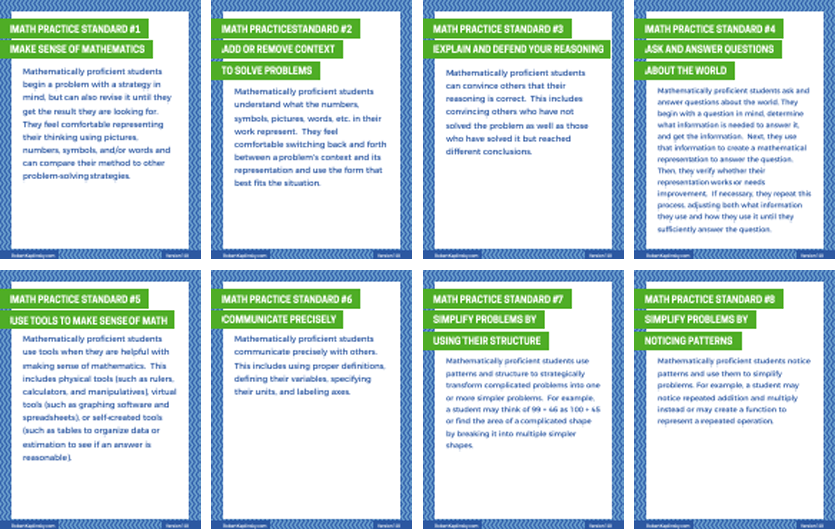This is the second of an eight blog post series where I’ll attempt to make a version of each of the Common Core State Standards’ Math Practices that educators, parents, and students can all understand. Simply put, the Math Practices are really tough to make sense of, which means that few educators have read them in full paragraph form and even fewer confidently understand them.
- My guiding principle comes from Antoine de Saint Exupéry who said “perfection is attained not when there is nothing more to add, but when there is nothing more to remove.” Certainly I could always add more details, but my goal is to make each standard as succinct as realistically possible and stop.
- I will make significant changes while still preserving what I believe to be each standard’s essence.
- I’ll also copy and paste the official math practice for comparison.
- I’ll add notes to explain my reasoning.
I realize that inevitably my version will also be flawed. Mainly I’m just curious to see if I can do any better. Thanks in advance for leaving me constructive criticism in the comments below so I can improve them.

Math Practice 2: Add or remove context to solve problems.
Mathematically proficient students understand what the numbers, symbols, pictures, words, etc. in their work represent. They feel comfortable switching back and forth between a problem’s context and its representation and use the form that best fits the situation.
Math Practice 2: Reason abstractly and quantitatively.
Mathematically proficient students make sense of quantities and their relationships in problem situations. They bring two complementary abilities to bear on problems involving quantitative relationships: the ability to decontextualize—to abstract a given situation and represent it symbolically and manipulate the representing symbols as if they have a life of their own, without necessarily attending to their referents—and the ability to contextualize, to pause as needed during the manipulation process in order to probe into the referents for the symbols involved. Quantitative reasoning entails habits of creating a coherent representation of the problem at hand; considering the units involved; attending to the meaning of quantities, not just how to compute them; and knowing and flexibly using different properties of operations and objects.
- The two most important words in the official version of Math Practice 2 are certainly “contextualize” and “decontextualize.” They are even italicized. The basic idea is that students should be able to fluidly move back and forth between the context and the abstraction. I considered also using contexualize and decontextualize but ultimately decided that they were not friendly enough words. I had a hard time finding student friendly substitute words and eventually ended up with “add or remove context.”
- Note that the entire original standard is only three sentences long with one sentence being 69 words long and another having three semi colons. I don’t think I’ve ever written an understandable sentence that is 60+ words long or has 3 semicolons.
- I considered adding this third sentence: “They do not respond to the question ‘Where did that 46 come from?’ with ‘I don’t know, I got it with my calculator.’ This allows them to notice when a calculation does or doesn’t make sense.” I didn’t because it violated my guiding principle of “perfection is attained not when there is nothing more to add, but when there is nothing more to remove.”


I appreciate you cleaning this one up! I’m still confused on what is meant by “switching back and forth between a problem’s context and its representation,” even after reading the nixed third sentence. Do you mind giving another example of this?
I think it’s referring to the context of the problem (e.g., “I have 3 apples. You have 4 apples. How many apples do we have together?) to its abstract representation (3 + 4 = ?).
Yeah, similar to what SEI said. So if you had to find out how much a $1 pear and a $2 avocado were together, you could turn that into $1 + $2. Then you could also look at $1 + $2 + $2 + $2 and realize that must mean one pear and 3 avocados. Back and forth.